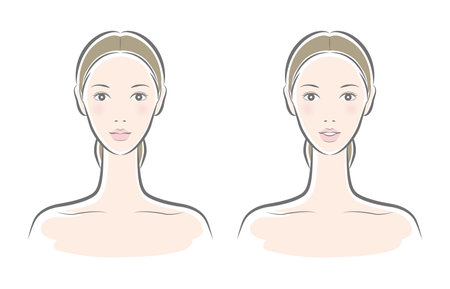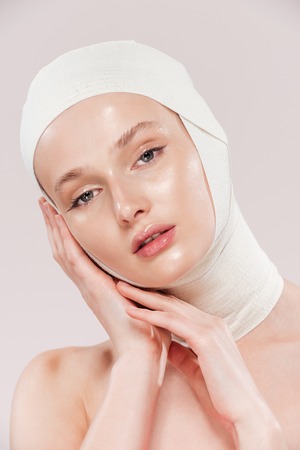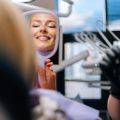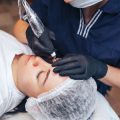Introduction to Gender Inclusivity in Aesthetic Treatments
The concept of gender inclusivity has rapidly become a defining force within the UK’s aesthetic treatment sector, reflecting broader societal shifts towards equality and diversity. Traditionally, beauty norms in Britain were rigidly aligned with binary gender identities, often marginalising individuals whose self-expression fell outside these conventional categories. However, a growing awareness of gender fluidity and non-binary identities is now reshaping both public discourse and industry practices. Clinics and practitioners across the UK are increasingly adopting inclusive approaches, offering tailored treatments that cater to a wider spectrum of gender expressions. This evolution is not only about expanding service menus but also encompasses staff training, marketing strategies, and patient consultation processes—ensuring everyone feels acknowledged and respected. These changes are deeply embedded in the British context, where progressive attitudes towards gender rights intersect with a longstanding appreciation for personal style and individuality. As such, the UK stands at the forefront of redefining aesthetic standards, paving the way for an industry where beauty is no longer confined by traditional gender boundaries but instead celebrates diversity as its core value.
Historical Beauty Norms in the UK
The evolution of beauty standards in the UK reveals a complex interplay between cultural values, societal expectations, and gender roles. Traditionally, British beauty ideals have been heavily influenced by class structure, royal patronage, and prevailing artistic trends. For centuries, women were expected to conform to narrow standards—pale skin, delicate features, and modest attire signified refinement and social status. Men, on the other hand, were valued for their stoic composure, athletic build, and understated grooming.
| Era | Female Ideals | Male Ideals |
|---|---|---|
| Victorian (1837–1901) | Pale complexion, cinched waist, elaborate hair | Bearded or moustached, strong jawline, formal dress |
| Post-War (1940s–1960s) | Slim figure, subtle makeup, tidy hair | Clean-shaven, athletic physique, neat hairstyle |
| Late 20th Century | Tanned skin, bold fashion choices, visible individuality | Muscular build or “lad” culture aesthetics |
These historical norms shaped public perceptions and directly impacted aesthetic treatment preferences. For example, cosmetic treatments for women often centred around achieving symmetry and youthfulness—reflecting ideals of femininity and social desirability. Men’s treatments were typically limited to hair restoration or subtle dental work, as overt concern with appearance was sometimes stigmatised as unmasculine. These deeply rooted expectations created a binary approach to beauty that left little room for gender diversity or individual expression.

3. Shifting Consumer Demographics and Attitudes
The UK’s aesthetic treatment landscape is undergoing significant transformation, driven by evolving consumer demographics and attitudes towards beauty across genders. Recent market research highlights a pronounced increase in demand for non-surgical cosmetic procedures among all gender identities, with the British Association of Aesthetic Plastic Surgeons (BAAPS) reporting a 15% year-on-year rise in male clientele alone. This shift is indicative of a broader cultural move away from rigid gender norms, as more individuals seek treatments that align with their personal sense of identity rather than societal expectations.
Historically, aesthetic clinics in the UK predominantly catered to female clients, reinforcing traditional concepts of femininity and beauty. However, contemporary trends demonstrate a diversification in both marketing strategies and service offerings. Clinics now actively promote gender-neutral language and inclusive environments, recognising that modern consumers—regardless of gender—prioritise authenticity and self-expression over conformity. According to a 2023 Mintel report, 38% of UK men aged 25-44 have either undergone or considered an aesthetic procedure, up from 27% five years ago. This growth is mirrored among non-binary and transgender communities, who increasingly turn to tailored treatments as part of their journey toward body confidence.
Moreover, social media has played a pivotal role in reshaping perceptions around aesthetic enhancements. Platforms such as Instagram and TikTok have normalised discussions about injectables, skincare regimens, and surgical options among diverse audiences. The visibility of male and gender-diverse influencers openly sharing their treatment experiences has contributed to destigmatising aesthetic procedures for those outside the traditional female demographic. These digital narratives are supported by clinics adopting transparent communication around outcomes and risks—an approach that resonates strongly with younger consumers seeking trust and credibility.
In summary, the UK’s aesthetic sector is moving beyond binary beauty ideals. The embrace of gender inclusivity reflects not only shifting consumer preferences but also broader societal changes regarding identity and self-presentation. As attitudes continue to evolve, practitioners must remain agile, leveraging data-driven insights to meet the nuanced needs of an increasingly diverse clientele.
4. Innovations in Practice: Gender-Neutral Treatments and Services
Recent years have witnessed a marked shift in the aesthetic industry towards gender inclusivity, particularly across clinics in the UK. This progression is driven by both technological advancements and a cultural recognition of non-binary identities, prompting practitioners to reimagine their approach to beauty treatments. Traditionally gendered procedures—such as facial contouring or hair removal—are being redefined to cater for diverse needs, dismantling outdated stereotypes about masculine and feminine ideals.
Technological Advancements Enabling Inclusivity
The integration of advanced devices and techniques now allows clinics to offer highly personalised, gender-neutral services. Innovations in laser technology, injectable fillers, and skin rejuvenation tools mean that treatments can be tailored not by gender, but by individual anatomical features and personal goals. For example, non-surgical jawline sculpting is offered without prescribing a “masculine” or “feminine” result, focusing instead on the patient’s desired outcome.
Adapting Clinic Services for All Genders
Forward-thinking clinics are also evolving their service models to create genuinely inclusive environments. This includes reviewing language used in consultations, training staff on gender diversity awareness, and revising marketing materials to reflect a broader spectrum of beauty. Some establishments even provide bespoke treatment plans designed explicitly for transgender and non-binary patients undergoing medical transition or seeking subtle enhancements.
Examples of Gender-Neutral Treatment Options
| Treatment Type | Traditional Approach | Gender-Inclusive Approach |
|---|---|---|
| Lip Augmentation | Defined as fuller lips for women, sharper lines for men | Customised volume and shape per individual preference |
| Hair Removal | Female face/legs or male back/chest packages | Area-specific packages suitable for any gender identity |
| Facial Contouring | Masculinisation or feminisation focus | Sculpted to unique bone structure regardless of gender label |
Pioneering Clinics Leading Change
UK clinics embracing this inclusive philosophy are setting new standards for patient care and satisfaction. They actively seek feedback from LGBTQ+ communities, invest in ongoing staff education, and foster spaces where every client feels welcome and respected. As demand for personalised aesthetics grows, these innovations position British clinics at the forefront of a global movement towards diversity in beauty standards.
5. Legislation, Ethics, and Social Responsibility
The drive towards gender inclusivity in UK aesthetic treatments is not merely a matter of evolving trends—it is intricately tied to legal frameworks, ethical obligations, and broader societal responsibilities. The Equality Act 2010 provides a foundational legal structure, prohibiting discrimination on the grounds of gender identity and ensuring that aesthetic practitioners operate within a framework that champions equal access and respect for all clients. However, as non-binary and transgender individuals increasingly seek aesthetic services, practitioners must navigate a more complex regulatory environment, including requirements around consent, confidentiality, and safeguarding vulnerable groups.
From an ethical standpoint, the British Association of Cosmetic Nurses (BACN) and other professional bodies emphasise the importance of cultural competence and sensitivity in patient interactions. This means practitioners must actively avoid reinforcing traditional binary beauty standards or inadvertently promoting gender stereotypes through their marketing or consultation processes. Instead, there is an ethical imperative to offer bespoke treatment plans that recognise diverse identities and body goals, fostering an inclusive clinic culture where every individual feels respected.
Social responsibility also comes to the fore as clinics play an influential role in shaping public perceptions of beauty. By adopting gender-inclusive language across websites, forms, and communications—and by showcasing diverse case studies—UK clinics can help challenge outdated norms while providing a safe space for all clients. Additionally, continuous training on gender diversity is increasingly recognised as best practice to prevent unconscious bias and ensure consistently high standards of care.
As legislation continues to evolve alongside shifting social attitudes, it is essential for UK aesthetic providers to remain proactive—reviewing policies regularly, engaging with advocacy groups, and participating in industry-wide discussions about inclusivity. Ultimately, prioritising legal compliance, ethical integrity, and social impact will be key differentiators for forward-thinking practices committed to redefining beauty norms in a more inclusive era.
6. The Future of Beauty Norms in the UK
Looking ahead, gender inclusivity is poised to become a defining force in shaping the future of beauty norms and aesthetic treatments across the UK. As cultural awareness deepens and conversations around gender diversity continue to evolve, industry stakeholders are expected to prioritise inclusive practices as a central pillar of their operations.
Anticipated Shifts in Consumer Expectations
The next few years will likely witness an even greater demand for personalised treatment plans that transcend traditional gender boundaries. British consumers—especially younger generations—are increasingly seeking aesthetic procedures that reflect individual identity rather than conforming to binary stereotypes. Clinics and brands that actively embrace this shift by offering gender-neutral consultations, diverse promotional imagery, and tailored aftercare will stand out in a competitive market.
Innovation in Products and Techniques
The drive towards inclusivity is already catalysing innovation within the sector. We can expect further development of products specifically designed for varied skin types, facial structures, and hormonal profiles, moving away from a ‘one size fits all’ approach. Additionally, practitioners will need ongoing training to ensure their techniques and communication strategies resonate with clients across the gender spectrum.
Industry-Wide Transformation
From regulatory updates to marketing campaigns, every facet of the UK’s aesthetic industry is set for transformation. Professional bodies are likely to introduce guidelines that emphasise respect for gender diversity and equality of care. Meanwhile, collaboration with advocacy groups will help foster environments where all individuals feel welcomed and understood.
Cultural Impact and Global Leadership
As the UK continues to champion progressive values, its approach to gender inclusivity in aesthetics could set benchmarks on a global stage. By leading with empathy, technological advancement, and ethical integrity, the nation’s beauty industry not only reflects but also shapes broader societal attitudes towards identity and self-expression.
Ultimately, embracing gender inclusivity is not just about keeping pace with trends—it represents a forward-thinking commitment to authenticity, respect, and empowerment within the ever-changing landscape of British beauty standards.


